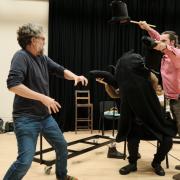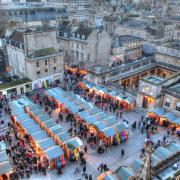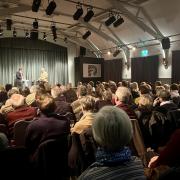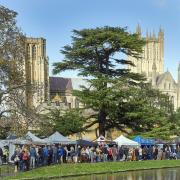England’s largest annual festival of history and culture is back this month with more than 5,000 events taking place in venues ranging from castles to council offices. Laura Davey takes a look at 12 highlights in Bristol and Somerset

The West Country has always been a hotspot for the arts and culture scene. In fact, Bristol is home to the Bristol Old Vic - the oldest continually-operating theatre in the English-speaking world - while the Curzon Theatre in Clevedon can boast similar credentials as one of the oldest UK cinemas.
With all this heritage, it’s only fitting that Bristol houses an accredited museum and archive of British theatre history. The University of Bristol Theatre Collection began life as part of the UK’s first university drama department, and has grown into a world-class research centre for theatrical study and memorabilia from the 16th century to the present day. This September, an exclusive display about the Bristol Old Vic will be on show to the public, as part of the largest annual nationwide festival of history and culture.
Heritage Open Days is funded by the National Trust and players of People’s Postcode Lottery, and this year has been extended across two weekends for the first time in its 24-year history. Offering visitors the chance to discover the secret history on their doorstep, or explore hidden aspects of familiar buildings and places, free events are being held across the area.
Here’s a look at what else visitors can expect in Bristol and throughout Somerset:

Arts and culture
A guided tour of the 1912 Curzon Cinema in Clevedon will take visitors behind the scenes to see how cinemas used to look in the glamorous early age of the silver screen. Visitors can see the Edwardian tea room, balcony and the unusual Skelionite - decorative pressed metal - ceilings in the auditorium. Film equipment throughout the 20th century will also be on display, with a fascinating ‘compare and contrast’ session, showing the difference between 1960s analogue projection and modern digital techniques.
Long before film technology even existed, poet Samuel Taylor Coleridge was putting pen to paper in Bridgwater, writing his most famous works such as Rime of the Ancient Mariner and Kubla Khan. Visitors to Coleridge Cottage and wildflower garden at Nether Stowey will experience a hands-on re-creation of this Georgian family home, and learn more about the birthplace of British Romanticism.

Engines and power
Another significant collection in Bristol is the Rolls-Royce Heritage Trust. Featuring aero engines built in the city, displays include the Olympus 593 turbojet which powered Concorde, and the Pegasus engine from the Harrier ‘jump jet’. Not normally open to the public, visitors will get a rare chance to take a guided tour of these motorised treasures and learn about the city’s engineering past.
Pre-mechanical energy will also be on show in Timberscombe at the Cowbridge Sawmill, run by water, with Westonzoyland Pumping Station Museum, being a tribute to the power of steam. The sawmill will be open for guided tours and rural craft displays, while visitors can take a ride in a refurbished passenger coach at the station museum.

Mining and recycling
The Victorian steam age relied heavily on coal. At one such site, the Ram Hill Colliery on the outskirts of Bristol, visitors can walk the nine-mile Dramway route and see the remains of the shaft, engine house and horse-powered pulley of the mid-19th century.
Although the coal mine is long since closed, mining continues to be a part of the area’s economy. At Stancombe Quarry, a working limestone pit still produces over a million tonnes of aggregate for the construction industry every year. Family-friendly tours of the site will explain the process from blasting, crushing and processing, through to the role the rock has played in the buildings of the region and the future of sustainable mineral extraction. Sustainability is also key for the Bath and North East Somerset Council’s Recycling Depot. Opening to the public for an exclusive behind-the-scenes tour, if you’ve ever wondered what happens after you’ve put your blue bin out, now’s your chance to find out!
Gardens and leisure
For a leisurely day out, some of the area’s most unique gardens will be open. Warmley Grottoes and Gardens are a fascinating complex of man-made caves and pools, popular in 18th century Britain. Another Georgian fashion, bathing, can be seen at Cleveland Baths. This crescent shaped pool and changing rooms were built as a public swimming pool, and visitors will be able to see and support the ongoing restoration work.
On the other side of the Atlantic, the Upper Garden at Mount Vernon was George Washington’s formal kitchen garden. Following an extensive renovation project, visitors to the American Museum in Britain can explore a faithful replica of the fruitful estate of this ‘gentleman farmer’. Green-fingered visitors during the festival will also get to meet the gardening team, and might even pick up some top tips from the head gardener.
Heritage Open Days is taking place between September 6-9 and 13-16, and every single event is free. Further details of the events mentioned, as well as the full regional and national listings, can be found at heritageopendays.org.uk.


























